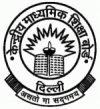(Download) CBSE Proficiency Test in Science Sample Paper For Class X : 2011
Disclaimer: This website is NOT associated with CBSE, for official website of CBSE visit - www.cbse.gov.in
CBSE Proficiency Test in Science - 2011
(SAMPLE PAPER)
General Instructions: (All questions are compulsory.)
The questions are divided into three sections:
1. Section I: Questions 1 to 9 are Multiple Choice Questions. Each
multiple choice question has four options out of which only ONE option is
correct. Each correct answer earns a credit of 2 marks. A wrong answer
carries a penalty of -2/3 mark.
2. Section II: Questions 10 to 12 are Numerical Questions. Each
correct answer earns a credit of 4 marks. There is no negative marking for
these questions.
3. Section III: Questions 13 to 15 are Column-matching Questions. In
these questions, there are 3 items in the left column (Column I) and 6
options in the right column (Column II). You have to match each item in
Column I with ALL the correct options in Column II. For each item in Column
I, you earn 2 marks if all correct matches in Column II are indicated, and
no incorrect matches are indicated. There is no negative marking for these
questions.
-
For all types, an unanswered question earns no mark.
1. There are several microorganisms like amoebae and
bacteria that live in water and use oxygen. Choose the option that describes
the process by which oxygen enters the cell through the plasma membrane.
(A) The plasma membrane selectively takes in oxygen into the cell. This
process needs energy.
(B) The plasma membrane selectively takes in oxygen into the cell. This
process does not need energy.
(C) Oxygen enters into the cell from the surrounding water by diffusion.
This process does not need any energy.
(D) Oxygen enters into the cell from the surrounding water by diffusion.
This process needs energy.
2. Select the option that gives the size of the
components in a cell in an increasing order.
(A) ribosome, mitochondria, nucleus, ATP
(B) ATP, ribosome, mitochondria, nucleus
(C) mitochondria, ribosome, ATP, nucleus
(D) ATP, mitochondria, ribosome, nucleus
3. Select the correct statement about viruses.
(A) Viruses consume host cells by ingestion.
(B) Viruses depend on the host cells for respiration.
(C) Viruses reproduce outside the host cells and spread infection to other
host cells.
(D) Viruses do not have any metabolic process occurring within themselves.
4. There are two samples of 2 g each of hydrogen and
helium gases. Which of the following statements is true?
(A) Number of moles of hydrogen is the same as that of helium.
(B) Number of moles of hydrogen is double that of helium.
(C) Number of moles of hydrogen is half that of helium.
(D) Number of moles of hydrogen is four times that of helium.
5. A student needed to find out the polarity (+ or ) of
the two terminals of a battery coming out of a device. She made a setup by
placing the two wires inside water (with little lemon added) in a glass and
checked if gases were bubbling out from the wire ends. Which of the
following is correct?
(A) The wire end with higher quantity of gas bubbles is the negative
terminal.
(B) The wire end with higher quantity of gas bubbles is the positive
terminal.
(C) The wire end with no gas coming out is the negative terminal.
(D) The wire end with no gas coming out is the positive terminal.
Courtesy: CBSE.GOV.IN
